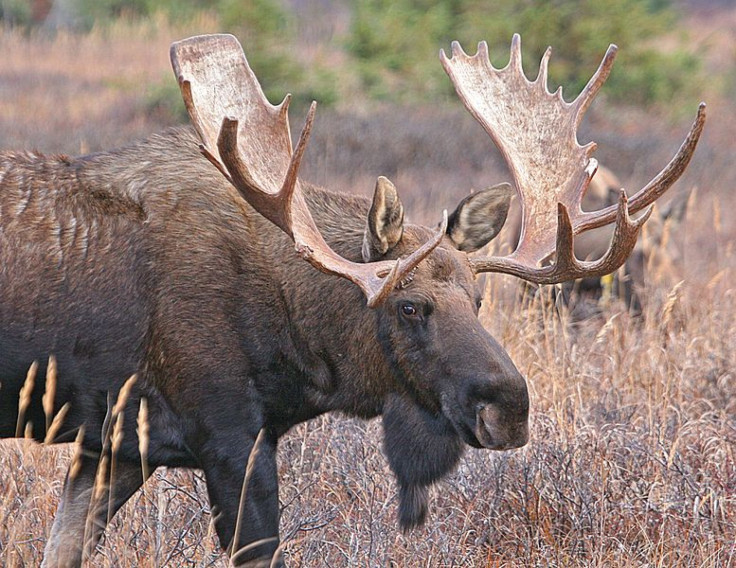North American Moose Die Off, Climate Change 'Plays A Huge Part'

North America’s moose are dropping like flies, their populations declining at an alarming rate. No one is quite sure why the animal is dying off, but scientists say the culprit is likely climate change.
In Minnesota, for example, one moose population started declining by 25 percent a year several years ago, the New York Times reported. The animal’s mortality rate used to be 8 percent to 12 percent a year. Another of the state’s moose populations has nearly disappeared, down from 4,000 members in the 1990s to currently just 100.
In Montana, the steep drop in moose has caused officials to issue fewer hunting permits. Last year, just 362 permits were given out -- less than half as many as in 1995, according to The Times.
A number of other states, including Wyoming and North Dakota, are also reporting a rise in moose die-offs.
The moose is the largest land mammal in North America. It’s also the largest member of the deer family, with male moose, called bulls, weighing 600-1,200 pounds and standing 6 feet tall at the shoulder. Their name means “twig eater” in Algonquin, the language of indigenous tribes.
According to Live Science, there are about 800,000 to 1.2 million moose in North America. Hunters kill about 90,000 of them every year. Bears and wolves are their only other natural predators, unless you count the winter tick, a small parasite common across most of North America. Winter ticks begin feeding in November, and dine until the following March and April. Females then drop off and lay their eggs -- up to 3,000 of them -- in the soil. The parasites prefer hoofed animals, especially deer, and are found on elk, caribou, horses and cattle. But moose seem to bear the brunt of winter tick feeding.
According to the Natural Resources Research Institute at the University of Minnesota, the average moose carries about 33,000 ticks on its body. Some animals can have more than 100,000 of the parasites.
The ticks come out in the fall and climb onto animal hosts for the winter. If they don’t find a host to feed off, they die.
The dominant theory as to why the moose are dying off in North America is that climate change is causing shorter winters, meaning fewer of the parasitic ticks are dying. More ticks equal more tick infestations for the moose which, unlike deer, don't groom themselves.
This leads moose to rub and tug on areas of their bodies where ticks are feeding. Eventually, the moose have large patches of missing or broken hair, called “ghost” moose, because the white base of the hair shaft is all that's left.
In some states, winter ticks have become the “main mortality factor for moose,” New York’s Department of Environmental Conservation notes.
“It’s pretty depressing,” Kristine Rines, a wildlife biologist and moose project leader for the Minnesota’s Fish and Game Department, told Moms Clean Air Force. “It’s a pretty tough way to go. There’s no question that climate plays a huge part in this. If we had winters that lasted as long as they used to, we might not be having this conversation.”
When there are lots of ticks out there, many moose, especially the older adults and calves, become so heavily infested with ticks that they become anemic, a condition caused by a lack of healthy red blood cells or hemoglobin. Anemia causes fatigue because organs aren't getting an adequate supply of oxygen. The moose eventually starves.
"It's complicated because [there are] so many pieces of this puzzle that could be impacted by climate change," Erika Butler, formerly of the Minnesota Department of Natural Resources, told The Times.
But ticks certainly seem to be at the center of most conversations about the North American moose die-off.
© Copyright IBTimes 2024. All rights reserved.






















